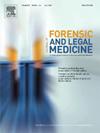头部或颅骨受伤?使用误译ICD诊断分类的后果:多中心、盲法、随机对照分析。
IF 1.2
4区 医学
Q3 MEDICINE, LEGAL
引用次数: 0
摘要
匈牙利的急诊护理单位每年治疗大约14 -18万例不同程度的头部损伤。这些头部伤害主要是由交通事故、袭击或家庭事故造成的。门诊记录包含有关头部损伤的情况和潜在机制的细节,物理和影像学检查的结果,以及治疗建议。该记录还包含诊断和采取干预措施的标准化代码,使用BNO (betegssamgek Nemzetközi Osztályozása)分类,这是国际诊断分类系统ICD(国际疾病分类)的匈牙利版本。这些记录在财务和统计方面都很重要。损伤诊断包括带有相关诊断类别的ICD代码,在大多数情况下还包括描述所受损伤的相应拉丁诊断。在详细的《伤害医疗诊断报告》(MDRI)中,国际疾病分类经常以拉丁文诊断的匈牙利语翻译出现。在匈牙利,MDRI报告是由医生应刑事检察官的要求编写的,用于法医鉴定。然而,在实践中,mdri通常是基于初级门诊记录。使用ICD第19章S00-S09中的代码诊断头部损伤。当ICD适用于不同的语言时,可能会出现翻译错误,从而导致某些诊断代码的不同应用。本研究调查了匈牙利法医鉴定MDRIs中ICD-10代码S07.1的使用和频率。我们的研究结果表明,由于翻译不准确,匈牙利的表面性头部损伤(特别是瘀伤)被错误地编码为S07.1,而在ICD-10中,S07.1用于严重的头部损伤(颅骨碾碎性损伤)。本文章由计算机程序翻译,如有差异,请以英文原文为准。
Head or skull injury? Consequences of using mistranslated ICD diagnosis category: Multicenter, blinded, randomized controlled analysis
Emergency care units in Hungary treat approximately 140–180 thousand head injuries of varying se'verity each year. These head injuries are mainly caused by traffic accidents, assaults, or domestic accidents. The outpatient care record contains details about the circumstances and underlying mechanisms of the head injury, the results of physical and imaging examinations, and therapeutic recommendations. The record also contains standardized codes for the diagnoses and the interventions performed, using the BNO (Betegségek Nemzetközi Osztályozása) classification, the Hungarian version of the international diagnostic classification system ICD (International Classification of Diseases). These records are important for financial reasons and for statistical purposes. The injury diagnoses consist of the ICD codes with the related diagnostic categories and in most cases also the corresponding Latin diagnoses describing the injuries sustained. The ICD categories often appear as Hungarian translations of the Latin diagnoses in the detailed Medical Diagnostic Reports on Injuries (MDRI). In Hungary, MDRI reports are prepared by physicians at the request of criminal prosecutors for forensic evaluation. In practice, however, MDRIs are usually based on the primary outpatient records. Head injuries are diagnosed using the codes in ICD Chapter 19, S00-S09. Translation errors may occur when ICD is adapted for different languages, resulting in different applications of certain diagnostic codes.
The present study investigates the use and frequency of the ICD-10 code S07.1 in Hungarian MDRIs issued for forensic evaluation. The results of our study show that, due to an inaccurate translation, superficial head injuries (specifically, bruises) are incorrectly coded in Hungary with S07.1, which in ICD-10 is reserved for severe head injuries (crushing injury of the skull).
求助全文
通过发布文献求助,成功后即可免费获取论文全文。
去求助
来源期刊

Journal of forensic and legal medicine
MEDICINE, LEGAL-
CiteScore
2.70
自引率
6.70%
发文量
106
审稿时长
57 days
期刊介绍:
The Journal of Forensic and Legal Medicine publishes topical articles on aspects of forensic and legal medicine. Specifically the Journal supports research that explores the medical principles of care and forensic assessment of individuals, whether adult or child, in contact with the judicial system. It is a fully peer-review hybrid journal with a broad international perspective.
The Journal accepts submissions of original research, review articles, and pertinent case studies, editorials, and commentaries in relevant areas of Forensic and Legal Medicine, Context of Practice, and Education and Training.
The Journal adheres to strict publication ethical guidelines, and actively supports a culture of inclusive and representative publication.
 求助内容:
求助内容: 应助结果提醒方式:
应助结果提醒方式:


